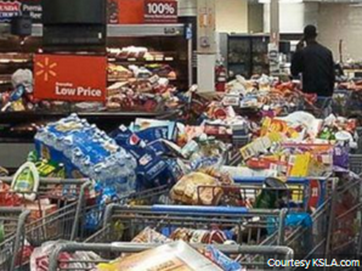Why Your Homemade Cleaning Products Aren’t Working (And How to Fix Them)
You switched to homemade cleaners to save money, cut down on chemicals, or maybe just feel better about what you’re spraying around your house.
But after a few weeks? You’re wondering if they’re actually doing anything.

Why Your Homemade Cleaning Products Aren’t Working (And How to Fix Them)
If your DIY sprays smell nice but don’t cut grease… if your baking soda paste leaves behind weird residue… or if your “non-toxic” toilet cleaner just doesn’t clean—this post is for you.
🧼 The Biggest Mistake Most Homemade Cleaners Make
Here’s what most DIY cleaning recipes get wrong: they skip the ingredients that actually do the cleaning.
That recipe you saw on Pinterest with just vinegar, water, and a few drops of lavender oil? It might smell great. But unless you’re cleaning glass or something already clean, it’s not going to cut it.
Why? Because there’s no surfactant—a fancy word for an ingredient that breaks down grease and grime. That’s what dish soap is. That’s what commercial cleaners are full of.
Fix it fast: Add a teaspoon of castile soap or dish soap to your all-purpose spray recipe. You’ll instantly see better results on countertops, sinks, and even bathroom messes.
💡 Not Sure What Ingredients Actually Work?
It’s easy to get overwhelmed by all the recipes out there—some safe, some… not so much.
If you’re not a chemist, you probably don’t want to guess whether vinegar and baking soda cancel each other out (spoiler: they do).
Grab this free cheat sheet so you’re not stuck Googling every time you clean:

A free, printable chart that breaks down what works, what doesn’t, and which ingredients should never be mixed.
🧪 Not Every Surface Likes Vinegar
Another reason your DIY cleaners might be falling short? Vinegar doesn’t play nice with everything.
- Never use vinegar on granite or marble – it can etch the surface.
- Skip it on hardwood floors unless it’s super diluted and followed by a water rinse.
- Don’t mix it with castile soap – they chemically fight each other.
If you’re seeing streaks, damage, or zero results, it might not be the cleaner – it might be where you’re using it.

🧽 You Might Be Using It… Wrong?
Even the best DIY cleaner needs time to work. If you spray and wipe immediately, you’re basically cleaning with water. Let it sit for 60 seconds. That gives it time to loosen grime.
Also: ditch the paper towels. Use microfiber cloths. They actually lift dirt instead of just pushing it around. They also save you money because you can wash and reuse them dozens of times.
🛠️ Want to Stop Guessing? Use This Instead
If you want all your recipes in one place, plus checklists, printable labels, and formulas that actually work—this kit does the heavy lifting for you:

A ready-to-go toolkit with the best DIY cleaning recipes, printable labels, and supply checklists to help you clean smarter.
🧴 Want to Level Up? Here’s What Helps
- Amber glass spray bottles – Protect your ingredients from light so they last longer
- Dr. Bronner’s castile soap – The MVP of natural cleaning
- Microfiber cloths – Game changer for mirrors, counters, and dust
✨ Final Thought
Homemade cleaning doesn’t have to mean watered-down sprays and wasted time. With a few small fixes, you’ll get the results you want—without the chemicals you don’t.
You’re not doing it wrong. You’re just one tweak away from doing it better.







